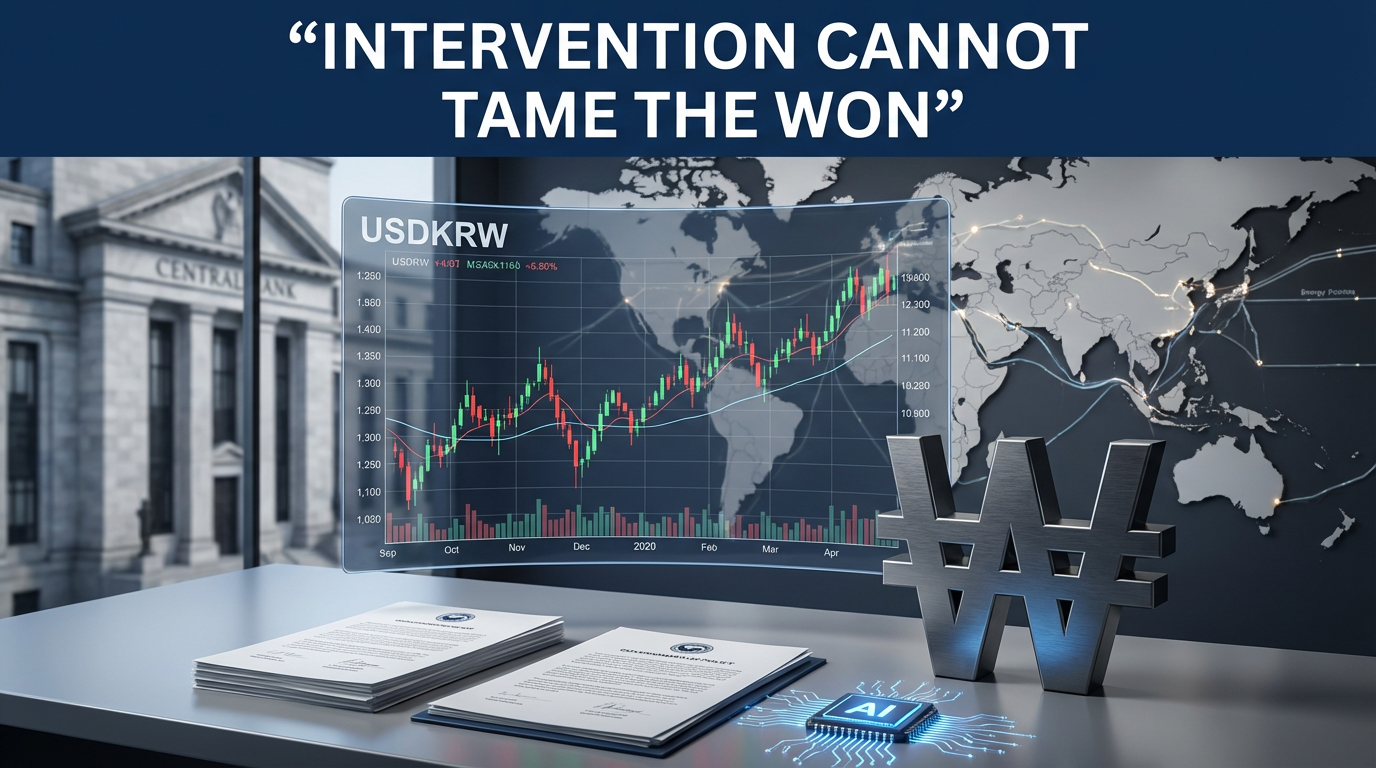● Mild Recession, Limited Downside Risk
2025 Global Economic Outlook: Stock Market Volatility, AI Cycle Opportunities, Inflation Impact & Investment Strategies
Recent Market Trends and Volatility Analysis
Recently, the stock market has experienced significant volatility, with the S&P 500 falling 3.1% and the Nasdaq dropping 3.5% last week.
Over the past three months, the S&P 500 has fallen by a total of 7.8%, and the Nasdaq has decreased by 12%.
Notably, large-cap stocks, such as the Nasdaq 100, have moved relatively more smoothly than the overall decline.
Amidst this sharp decline, some are proclaiming a “Great Depression” or the “start of a major bear market,” but
the current correction phase contains opportunities for rebound.
In a sharp decline, it is necessary to continue to observe the market’s flow rather than sell immediately.
Comparison of Past Cycles and the Present – Replication of the Internet Cycle
Referring to the Internet cycle of 1995-2000, there were five adjustments of 10% or more within one to three months.
At that time, the Nasdaq 100 showed a solid upward trend compared to the S&P 500, and in the rebound phase, it also recorded a maximum increase of 50-62%.
Based on the analysis that the AI cycle is currently in operation,
it is believed that the market is approaching the bottom and has the potential to rebound, similar to the pattern of the past Internet cycle.
Technical and Fundamental Analysis – AI Cycle, Productivity, Interest Rates, and Tariffs
As the AI cycle is currently in progress, the economic growth momentum is showing more positive aspects than existing economic indicators.
The risk of economic recession is low due to increased lending rates, relaxed lending screening criteria, and strengthened productivity growth rates in the second quarter.
On the other hand, tariff increases and trade deficit expansions may have a short-term inflation stimulus effect, but
overall, additional upside potential can be considered following a short-term adjustment and rebound.
Along with this, based on M2 market capitalization analysis and fundamental indicators, the S&P 500 index is expected to reach 6,500-7,200 points by the end of the year,
and the Nasdaq is expected to break through 23,000 points.
Investment Attractiveness and Strategies by Country and Industry
The attractiveness of developed country indices such as the Nasdaq 100, S&P 500, Russell 2000, Nikkei, and Dow Jones, including US large-cap technology stocks, remains high.
Among emerging countries, Taiwan, Vietnam, Korea, India, Brazil, and Shenzhen, China, are also noteworthy.
In particular, the IT, semiconductor, software, big tech, cloud tech, robotics, and aerospace industries
are expected to gain attention in the future market due to cost reduction and productivity gains from Deep Tech.
A strategy of investing in growth stocks that can be bought cheaply, instead of overvalued stocks like Berkshire Hathaway recently, is desirable.
Future Outlook and Precautions
It appears that the market has likely bottomed out after the recent sharp decline.
It is expected that the bottom will be completed within the next 1-2 weeks, and a strong rebound is expected.
On the other hand, as concerns about economic recession and rising inflation have not been completely resolved,
timing should be carefully considered based on fundamentals and technical analysis when investing.
Based on positive indicators such as the stability of the overall economy, lending, and productivity growth,
an investment strategy of increasing the proportion of stocks and reducing the proportion of bonds and gold is expected to be effective.
Summary
Recently, the stock market has experienced significant volatility, with major indices such as the S&P 500 and Nasdaq plummeting.
Similar to the Internet cycle of 1995-2000, the current correction phase may lead to rebound opportunities.
Fundamentals such as the AI cycle, productivity growth, and loan growth lower the risk of economic recession,
and the S&P 500 is expected to reach 6,500-7,200 points and the Nasdaq is expected to break through 23,000 points by the end of the year.
By country and industry, attention should be paid to US large-cap technology stocks and emerging market IT, semiconductor, and software-related stocks.
It is advisable to carefully adjust the timing of investment and asset allocation, taking into account these keywords related to global economic outlook, stock market volatility, AI cycle, inflation impact, and investment strategy.
[Related Articles…]
*YouTube Source: [유동원의 성공투자]
– 경기침체 & 대세하락장 가능성 극히 미미! 빠른 반등 가능할까?!

● Divorce-Triggering Finances
Comprehensive Analysis of Living Expenses Payment Issues and Grounds for Divorce
1. Overview of Living Expenses Payment Issues
Focus on how the situation of not paying living expenses leads to not only a simple monetary problem but also issues of spousal support obligations and trust between couples.
Organize precedents and legal interpretations regarding whether non-payment of living expenses constitutes grounds for divorce in chronological order.
2. Legal Meaning and Scope of Living Expenses Payment
Spouses are legally obligated to support and cooperate with each other.
Living expenses are not just monetary support but a minimal support responsibility to ensure the stable life of the other party.
The scope of living expenses refers to the amount necessary to maintain a basic standard of living, not personal consumption such as department store shopping expenses.
3. Conditions Under Which Non-Payment of Living Expenses Acts as Grounds for Divorce
If living expenses are not paid at all and the other party’s livelihood is not properly maintained, this can be recognized as an important reason in a divorce lawsuit.
However, the judge may find it difficult to judge a simple claim of “not giving” as a valid reason for divorce.
Non-payment of living expenses becomes a core issue only when the relationship with children, the degree of fulfillment of support obligations, and other additional conflict factors act in a complex manner.
4. Actual Cases and Problems Related to Living Expenses Payment Issues
In cases where the other party gives little or no living expenses, legal disputes such as infidelity or domestic violence appear along with monetary problems.
Regarding the payment of living expenses, there is a discrepancy between common sense based on the amount, such as media reports that “0% divorce if more than 10 million won is paid in living expenses,” and the actual reasons for divorce.
If a dispute over the payment of living expenses arises, an agreement that takes into account the realistic aspects of both parties’ economic situation, self-sufficiency, and additional expenses is necessary.
5. Response Strategies and Solutions
If you do not pay living expenses, you must first request payment from the other party through official documents (e.g., living expenses statement).
These official requests will be used as clear supporting documents in future divorce proceedings, property division, or child support claims.
If the lawsuit has been reached, a strategy is used to request future payments from the court based on the existing living expenses payment history and the required amount.
6. Linkage with Child Support and Property Division
The issue of living expenses is closely related to the issues of child support and property division, going beyond the simple support issue.
In particular, if there are minor children, whether or not living expenses are paid affects the child support calculation criteria, and both parties must agree.
Property division is also decided by considering the payment of living expenses and fulfillment of support obligations, so non-payment of living expenses acts as an important factor in various legal disputes.
7. Final Summary and Advice
The issue of paying living expenses is not just a monetary dispute, but a measure of mutual respect and fulfillment of support obligations between couples.
A reasonable solution should be sought without unnecessary emotional exhaustion through accurate calculation of the amount and systematic official request procedures.
In order to maintain an economically and legally stable relationship, it is necessary to comprehensively consider all factors such as living expenses, divorce, law, child support, and property division.
< Summary >
The issue of paying living expenses is not just a monetary dispute but is linked to spousal support obligations and trust between couples.
Spouses are legally obligated to support each other, and if living expenses are not paid, it has a significant impact on maintaining the other party's stable life.
In this situation, a legal response strategy linked to child support and property division issues is essential, along with formal request procedures.
In particular, proof of living expenses payment history and required amount can be used as strong evidence in divorce proceedings.
As a result, non-payment of living expenses acts as a major cause of economic and legal disputes, so mutual agreement and appropriate legal procedures are important.
</ Summary>
[Related Posts…]
Latest articles analyzing reasons for divorce related to living expenses
Latest articles on child support standards and division
*YouTube Source: [Jun’s economy lab]
– 이것 때문에 의외로 많이 이혼합니다(ft. 김지우 변호사 1부)



